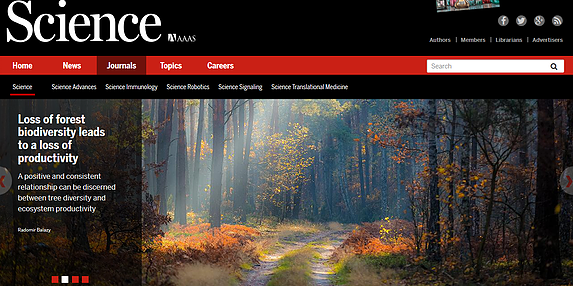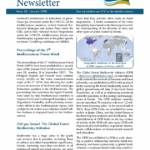GFBI studies and manages the world’s largest tree-level forest inventory database
With over 1.2 million plots from across the world
The database covers more than 70 countries in all the continents except for Antarctica

GFBI in the Spotlight
Forest Scholars Worldwide Team Up For Biodiversity Research
The research, published in the Oct. 14, 2016 issue of Science, marks the first major accomplishment of the GFBI team.
Loss of biodiversity has long been recognized as detrimental for nature, for nature’s sake. Now a team of scholars from 90 institutions in 44 countries show that it also provides enormous economic benefits. The team, formally known as the Global Forest Biodiversity Initiative (GFBI), consolidated field-based forest inventory data from 777,126 permanent plots across the world, and discovered that for forests in every part of the world, those with many tree species are more productive than nearby forests with few.
The team then estimated that the economic value of biodiversity in maintaining commercial forest productivity alone is worth USD$166–490 billion per year. This benefit- only one of many such benefits of biodiversity- is more than 20 times greater that what is spent each year on global conservation. This finding highlights the need for a worldwide re-assessment of biodiversity values, forest management strategies, and conservation priorities.
Nature paper offers global map to understand changing forests
Late-spring frost risk between 1959 and 2017decreased in North America but increased in Europeand Asia
Late-spring frosts (LSFs) affect the performance of plants and animals across the world’s temperate and boreal zones, but despite their ecological and economic impact on agriculture and forestry, the geographic distribution and evolutionary impact of these frost events are poorly understood. Here, we analyze LSFs between 1959 and 2017 and the resistance strategies of Northern Hemisphere woody species to infer trees’ adaptations for minimizing frost damage to their leaves and to forecast forest vulnerability under the ongoing changes in frost frequencies. Trait values on leaf-out and leaf-freezing resistance come from up to 1,500 temperate and boreal woody species cultivated in common gardens. We find that areas in which LSFs are common, such as eastern North America, harbor tree species with cautious (late-leafing) leaf-out strategies. Areas in which LSFs used to be unlikely, such as broad-leaved forests and shrublands in Europe and Asia, instead harbor opportunistic tree species (quickly reacting to warming air temperatures). LSFs in the latter regions are currently increasing, and given species’ innate resistance strategies, we estimate that ∼35% of the European and ∼26% of the Asian temperate forest area, but only ∼10% of the North American, will experience increasing late-frost damage in the future. Our findings reveal region-specific changes in the spring-frost risk that can inform decision-making in land management, forestry, agriculture, and insurance policy.
News

GFBI Hub-Purdue is hiring






